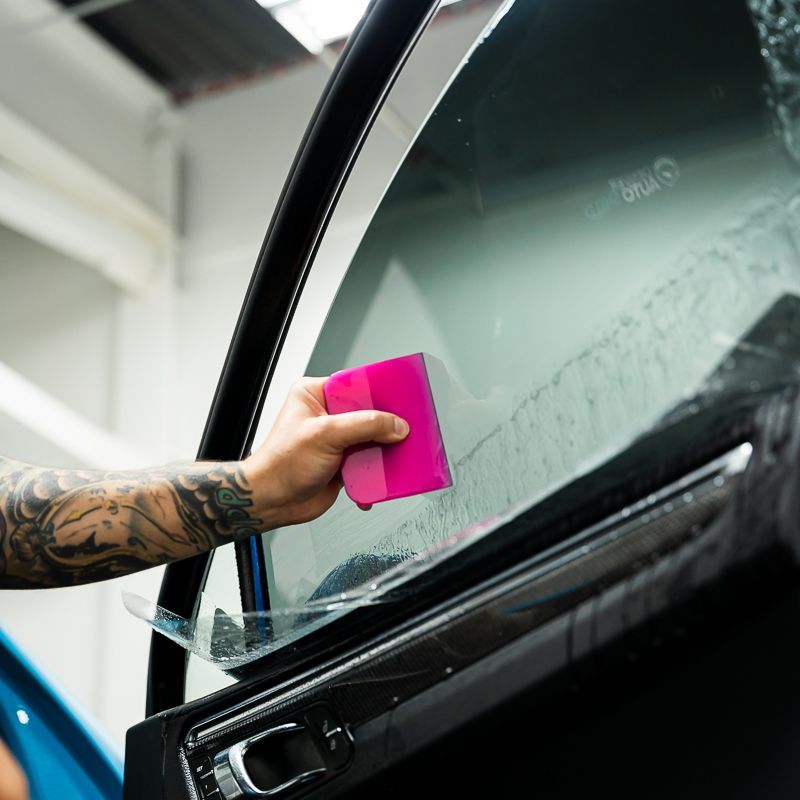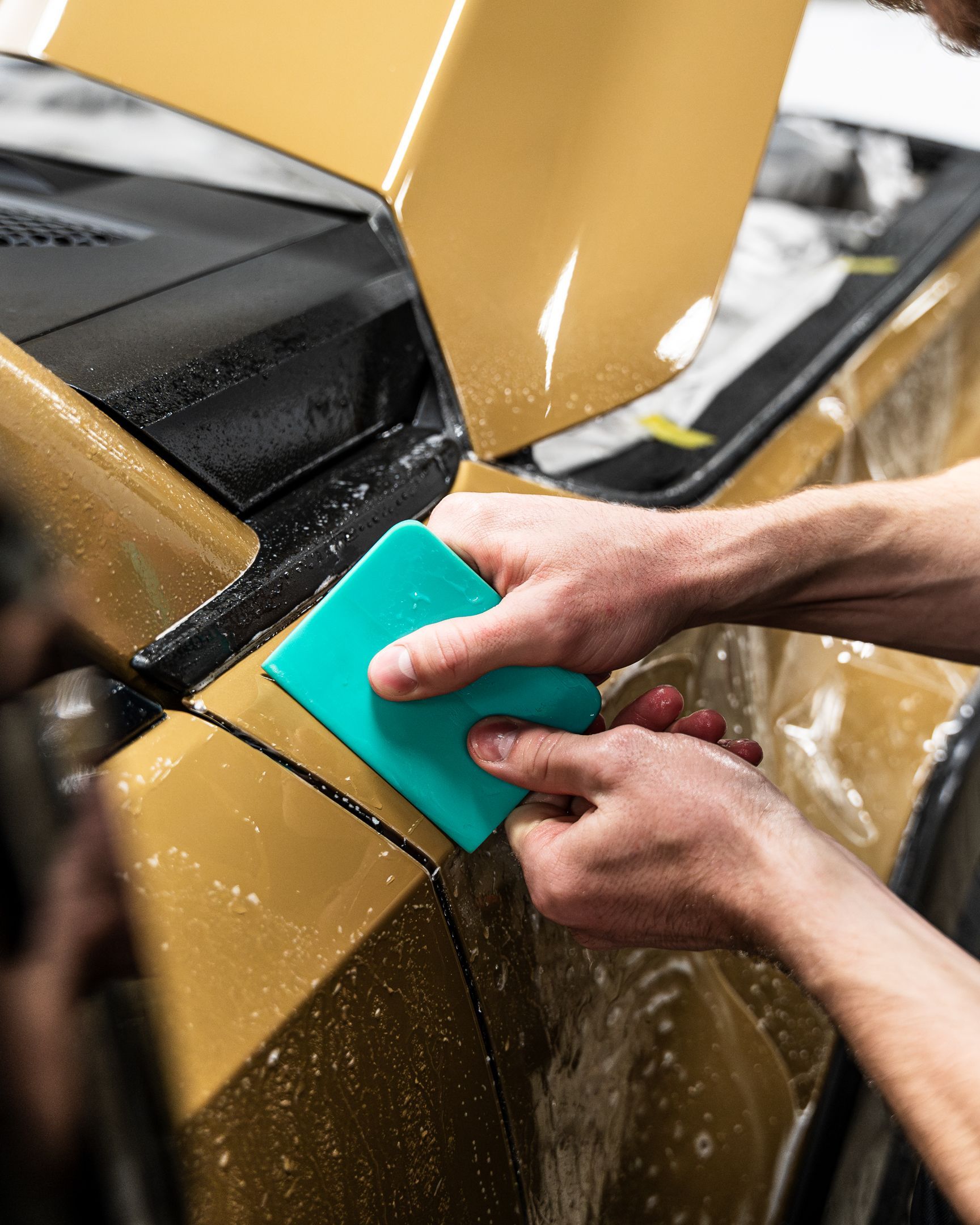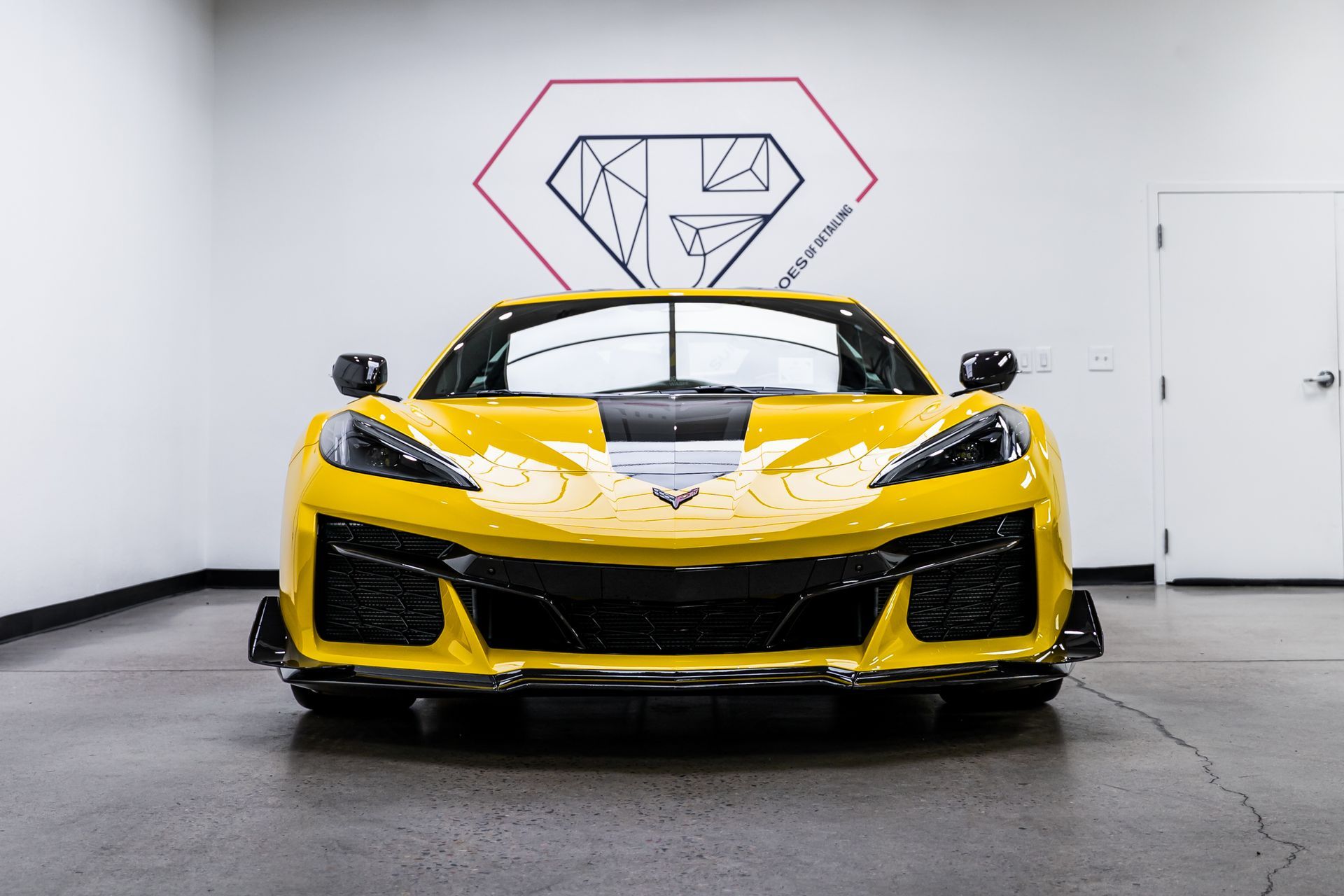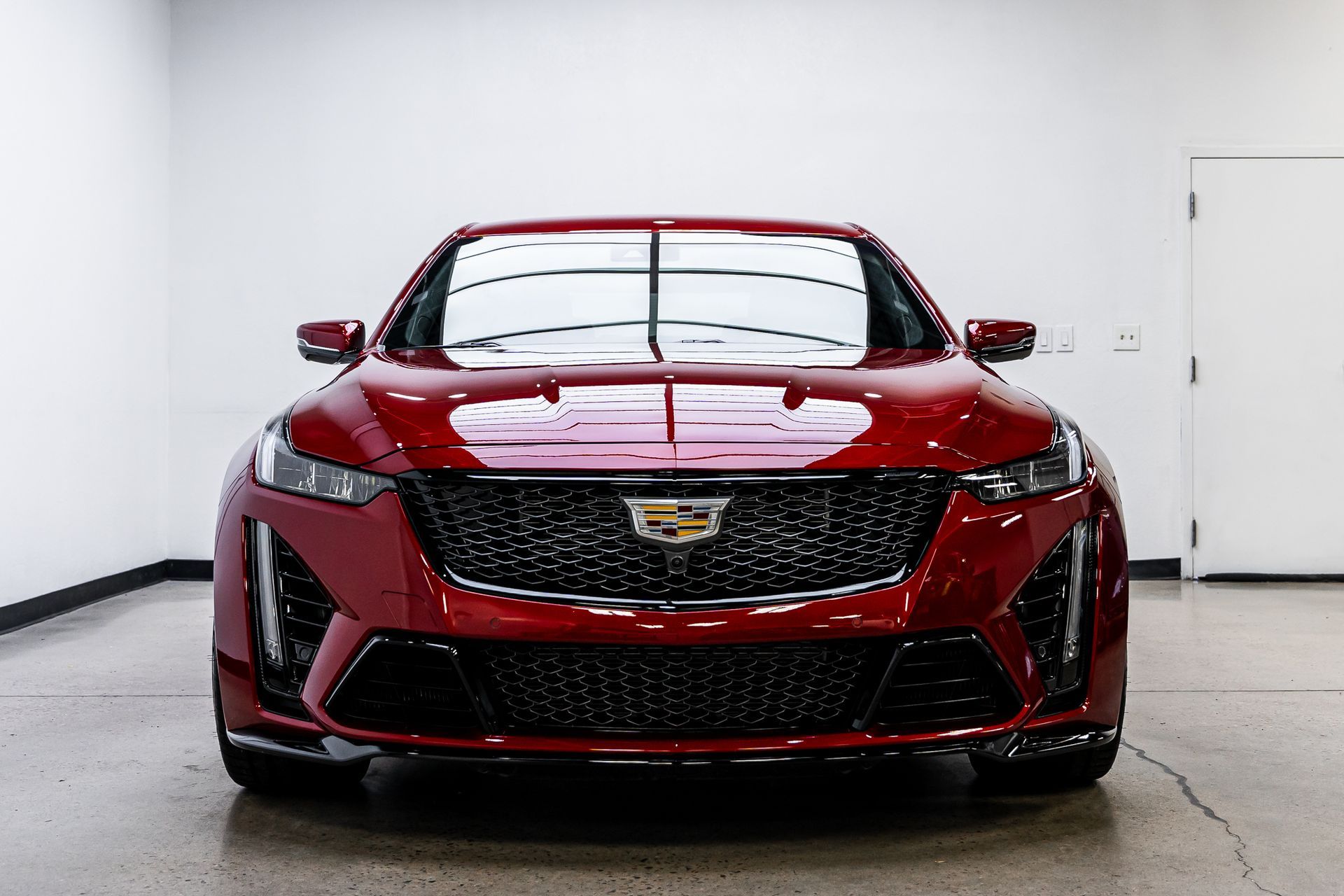Coating vs. Wax: Discover Which Provides Superior Long-Term Protection
CALL (720) 662-8520
GET A FREE ESTIMATEWhen it comes to preserving the appearance and value of your vehicle, the choice between coating and wax can feel overwhelming. After all, both options promise to protect your car's paint from various elements, but how do you know which one is truly worth your time and money? To help you navigate this decision, we’ll dive into a detailed comparison, exploring their durability, application processes, maintenance needs, and long-term value. Whether you're a car enthusiast or just someone who wants to keep their ride looking sharp, understanding these differences will make a significant impact on your vehicle care routine. Let's break down the facts!
Ceramic coatings provide superior long-term protection compared to traditional wax, lasting up to 5 years with proper maintenance, while wax typically lasts only 4-8 weeks before requiring reapplication. Additionally, ceramic coatings offer enhanced resistance against UV rays, chemicals, and environmental contaminants, making them the optimal choice for those seeking durable protection for their vehicle's paint.
Coating vs. Wax: Key Differences
- Durability and Longevity: One of the most striking differences between wax and ceramic coatings is longevity. Car wax, while it brings a beautiful shine, typically lasts only 4 to 8 weeks before needing reapplication. Think of it as a quick refresh that requires frequent attention. Ceramic coatings, however, yield impressive durability, often lasting up to 5 years or more with proper care. It’s like investing in a long-lasting relationship rather than a short fling; you commit to quality that stands the test of time.
- Application Process: When discussing application, traditional wax can be applied quickly and easily at home—just rub it on and buff it off—making it accessible for anyone enthusiastic about caring for their vehicle. On the flip side, ceramic coatings involve a more meticulous and multi-step process. Proper application usually requires paint correction prior to coating to ensure optimal adhesion, which can be challenging for novices. Many opt for professional installation, understanding that the investment often pays off with lasting protection.
- Protection Level and Performance: The protection level between wax and ceramic coatings varies vastly. While wax offers basic defense against minor contaminants like dust or light rain, ceramic coatings serve as a strong barrier against chemical stains, ultraviolet rays, and even environmental contaminants from everyday wear. Imagine putting on protective gear when you ride a bike versus just wearing a t-shirt; the latter may seem sufficient until you face some tough weather.
- Maintenance Needs: After they are applied, both require maintenance but in different formats. Wax demands frequent reapplications due to its relatively short lifespan, leading to higher labor costs over time—whether it’s your own effort or visits to your local detailer. In contrast, once you've put on a ceramic coating, routine maintenance involves only occasional washes or using maintenance sprays designed to extend the life of the coating without needing constant attention. Finally, let's discuss the financial aspect because understanding every angle could help in making an informed decision.
- Cost Consideration: Financially speaking, while wax might appear cheaper upfront—costing anywhere from $10 to $50—ceramic coatings can range from $500 to $2,000 when applied professionally. However, consider this: over time, those repeated trips to reapply wax can add up significantly. So while the initial investment in ceramic may seem daunting, the subsequent savings in maintenance—and more importantly—the peace of mind regarding protection can lead to better value overall.
Understanding these distinctions plays a crucial role for any car enthusiast looking for the right solution for their vehicle’s paint protection. This insight will help navigate what comes next regarding performance metrics and long-term benefits across each option.
Durability and Longevity Comparison
When it comes to keeping your car’s paint looking pristine, the type of protective layer you choose plays a significant role in how long that protection actually lasts. Car wax, although traditional, generally offers a temporary guard, providing 4 to 8 weeks of protection under typical conditions. During this short lifespan, factors such as weather, environmental exposure, and washing frequency can chip away at its effectiveness. A study by Consumer Reports indicated that wax applications usually average around 6 weeks, meaning many car owners find themselves facing regular reapplication—an inconvenient routine.
The contrast with ceramic coatings is striking; these advanced formulations boast impressive longevity, ranging from 1 to 5 years. Some premium options even claim durable protection lasting up to 7 years. While applying wax may give an immediate shine, ceramic coatings represent a substantial investment in time and resources but offer prolonged peace of mind through less frequent maintenance. One area where ceramic coatings truly excel is in resisting common wear and tear that plagues vehicles exposed to the elements. Imagine this: after just a couple of months of having a beautiful coat of wax on your car, dirt begins to gather and stick due to rain or grime on the road. It can feel like a never-ending battle against Mother Nature!
Ceramic coatings, on the other hand, have hydrophobic properties that allow water and contaminants to bead off easily, maintaining that just-applied gloss longer and leading to easier washing. Think about it—if your car stays cleaner for longer because of superior protection, this means fewer trips to the car wash or longer intervals between washes. Ultimately, investing in quality products translates into both time saved and enhanced appearance. All of this emphasizes the need for car enthusiasts and everyday drivers alike to consider their goals with paint protection solutions. If you want something quick and temporary for a show or event, then traditional wax might do the trick for today. But if you’re looking for lasting durability that can withstand daily challenges while allowing you to enjoy your drive without constant anxiety over paint care, then ceramic coatings are undoubtedly the way forward.
As we explore more aspects, such as hydrophobic properties, you'll see how these additional features play a crucial role in defining the best protective layer for your vehicle's finish.
Application and Maintenance
When it comes to enhancing your car's paint protection, the differences in application between wax and ceramic coatings are striking. Wax is often touted for its user-friendly nature, making it a popular choice among everyday car enthusiasts. Most car owners can pick up an applicator pad and some microfiber towels, apply the wax in a matter of hours, and achieve a beautiful shine that instantly enhances their vehicle's appearance. It's a quick process that offers satisfying results—after all, who doesn't love the look of freshly waxed paint glistening in the sun?
Ease of Application
In sharp contrast, applying ceramic coating is a more involved endeavor. It typically demands detailed surface preparation before any product touches the paint. This preparation may include paint correction to eliminate imperfections, ensuring optimal bonding when the coating is applied. For many do-it-yourself warriors, this meticulous process can feel overwhelming, leading them to seek professional help. Think of it as baking from scratch versus using a store-bought cake mix. While both produce sweet results, one requires greater skill and preparation. Moving on from application, let's consider ongoing maintenance strategies after the initial shine fades.
Maintenance
When discussing upkeep, wax necessitates frequent reapplication, typically every 1-3 months, depending on factors like weather conditions and driving habits. This frequency means that while your vehicle may always look fantastic right after applying wax, you'll be back at it again sooner than you'd like. On the flip side, ceramic coatings offer a more streamlined experience once applied; they generally require only periodic maintenance washes with pH-neutral soap and minimal use of maintenance sprays to preserve their hydrophobic properties.
Some folks worry about maintaining ceramic coatings; however, creating a simple maintenance schedule can alleviate most of these concerns. Regularly scheduled washes will ensure that you don’t lose the advantages gained from the initial application. Generally, it’s a good rule of thumb to inspect your vehicle every six months to determine if you simply need to refresh the protective layer with a spray or if more intensive care is required. Finding balance between ease of application and ongoing effort is critical in deciding between wax and ceramic coating. Each route comes with its own responsibilities and rewards, shaping not just how you protect your vehicle but also the enjoyment you derive from keeping it in tip-top shape. Considering these aspects of application and maintenance brings us closer to understanding how well each option withstands environmental factors that can impact your vehicle's finish.
Environmental Resistance
Understanding how your car's exterior stands up against different environmental threats is crucial when choosing a protective coating. Both wax and ceramic coatings are marketed as shields against elements like UV rays and chemical stains, but their effectiveness shifts dramatically under stress.
- UV Protection: When it comes to UV protection, ceramic coatings have a clear advantage. While both solutions attempt to protect car paint from harmful sun rays, wax tends to suffer from a quick degradation in its efficacy after prolonged exposure to sunlight. Imagine leaving a beautifully polished car out under the scorching sun day after day; you’d soon see that lustrous shine diminish into dullness. Traditional wax formulations break down rapidly when exposed to harsh conditions, making them much less effective over time. In contrast, ceramic coatings provide a more stable UV barrier that significantly minimizes the risk of oxidation and fading. This means your vehicle will retain its vibrant color longer, allowing you to enjoy that showroom shine for years instead of just months. This durability also translates well into other aspects of environmental resistance—namely, how it deals with chemical stains.
- Chemical Stains: Ceramic coatings excel at shielding your vehicle from harsh environmental contaminants such as bird droppings, tree sap, and even acid rain. These seemingly innocuous substances can wreak havoc on unprotected surfaces and can quickly strip off traditional wax coatings. Picture yourself parked under a tree; if you have chosen only wax for protection, you face the fear of splotchy sap marks on your vehicle and the potential damage caused by prolonged exposure to such natural adversaries. On the other hand, the chemically bonded layer created by ceramic coatings serves as a robust defense line—essentially repelling these pollutants rather than allowing them to eat away at your car’s finish.
As such, longevity in protection isn't merely about the duration of a product's effectiveness; it's also about how well it withstands adverse conditions. Investing in a ceramic coating proves beneficial—not only does it save you frequent trips for reapplication but also keeps your automobile looking pristine against damaging elements in the environment. For those serious about maintaining their car's value and appearance, this option becomes increasingly appealing as more consumers recognize its long-term advantages over traditional wax solutions. With these insights into environmental resistance, we can now explore how these protective options impact both cost considerations and long-term value.
Cost and Value Over Time
When we consider the long-term financial implications of protecting your vehicle, initial costs may appear daunting. A professional ceramic coating can range broadly from $500 to $2,000, influenced by factors such as the vehicle’s size and the quality of the coating used. In contrast, a decent car wax will set you back only $20 to $50. At first glance, applying wax seems like a more budget-friendly option. Yet, this perspective often overlooks longevity and overall value.
While the upfront cost of wax is tempting, its frequent reapplication turns what appears to be savings into an ongoing expense. If you're diligent about waxing every two months—as many car enthusiasts recommend—you could face an annual cost of approximately $120 to $300 just for wax. Over several years, those costs accumulate significantly. Additionally, not every application is equal: time spent prepping and applying can add up too. With each application, you might neglect certain elements or fail to achieve that perfect finish, leading to dissatisfaction.
On the flip side, investing in a ceramic coating, while initially more expensive, often provides a stronger safeguard for your vehicle's paint. The durability encoded within these coatings means they effectively last seven years or more when maintained properly. This translates to no periodic costs for reapplying wax; instead, you'll simply need to perform routine washes and maintenance. As a result, the long-term savings become evident: after the initial investment in ceramic coating, you'll spend substantially less over time than someone who regularly reapplies wax.
For those considering DIY options, entry-level ceramic kits start around $225, again highlighting how initial DIY investments stack against further expenditures of traditional waxing. These kits are relatively affordable and provide substantial protective benefits at a fraction of professional prices while ensuring you don't compromise on safety and quality. As we analyze these financial implications in relation to protection strategies for your vehicle, it’s essential to explore how these choices affect aesthetics and appearance.
Aesthetic Outcomes
The visual finish of a vehicle is crucial for many car enthusiasts, serving as a point of pride and often a reflection of their personal style. Wax generally delivers that coveted warm, glossy finish, often referred to as a "wet look," which classic car lovers adore. It's like applying a special polish with the power to amplify your vehicle’s sheen, drawing attention and admiration from onlookers alike. This aesthetic has been ingrained into car culture for decades, leaving many to appreciate its luster and tactile appeal.
Visual Finish
In contrast, ceramic coatings present a different kind of beauty altogether. They offer a glass-like sheen that not only enhances the paint's reflective properties but also ensures that colors appear richer and more vibrant. Imagine standing back and admiring your vehicle glistening under the sunlight—a metamorphosis right before your eyes. With ceramic coatings, you achieve a level of clarity that feels almost ethereal, making it difficult to ignore just how breathtaking your car can look when properly maintained. However, there's much more to appreciate beyond just the initial gloss; let's examine how consumers perceive these finishes over time.
Yet it’s important to note the subjectivity surrounding aesthetic appeal. Some individuals might gravitate towards the traditional charm of wax, reveling in the hands-on process of application—the ritualistic nature of an afternoon spent detailing can create a deeper connection between car and owner. Ultimately, understanding these distinctions empowers you to make an informed choice that aligns with both your aesthetic desires and lifestyle needs.
In summary, whether you choose wax or ceramic coating depends not only on your desire for visual appeal but also on your commitment to maintenance and personal connection with your vehicle. This decision reflects a blend of aesthetics and practicality that will shape your car care experience for years to come.
Expert Ceramic Coating Installation in Parker, CO
Give your vehicle the ultimate defense against the elements with Denver Auto Shield’s premium ceramic coating services in Parker, CO. Our advanced coatings provide a tough, water-repellent layer that protects against dirt, debris, and harmful UV rays, ensuring a pristine finish that’s easy to maintain. Designed to last and keep your car looking its best, our ceramic coatings help preserve the integrity of your paintwork for years. Ready to enjoy a glossy, protected ride with minimal effort? Contact Denver Auto Shield today to discover how our ceramic coating services can transform your vehicle’s appearance and durability.











